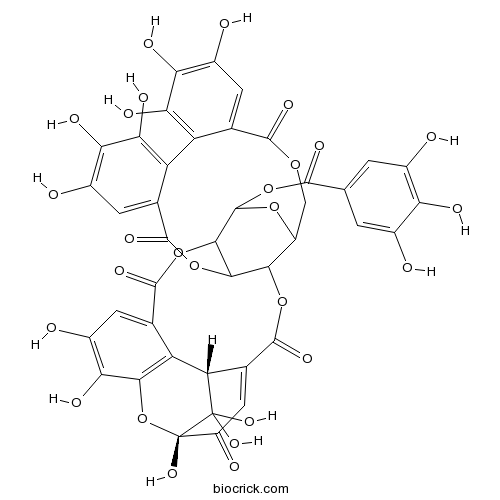Alchornea trewioides
Alchornea trewioides
1. The products in our compound library are selected from thousands of unique natural products; 2. It has the characteristics of diverse structure, diverse sources and wide coverage of activities; 3. Provide information on the activity of products from major journals, patents and research reports around the world, providing theoretical direction and research basis for further research and screening; 4. Free combination according to the type, source, target and disease of natural product; 5. The compound powder is placed in a covered tube and then discharged into a 10 x 10 cryostat; 6. Transport in ice pack or dry ice pack. Please store it at -20 °C as soon as possible after receiving the product, and use it as soon as possible after opening.
Natural products/compounds from Alchornea trewioides
- Cat.No. Product Name CAS Number COA
-
BCN2402
Geraniin60976-49-0
Instructions

[Preliminary screening of activity fraction of Alchornea trewioides suppresses expression of subgenomic hepatitis C virus RNA in vitro].[Pubmed: 24380267]
To screen activity fraction of Alchornea trewioides which suppresses expression of subgenomic Hepatitis C Virus (HCV) RNA in vitro.
[Phenolic acid derivatives from Alchornea trewioides].[Pubmed: 22993859]
To study the chemical constituents of Alchornea trewioides, silica gel column chromatography, Sephadex LH-20, reverse phase ODS column chromatography, MCI and semi-preparative HPLC were used to separate the 95% EtOH extract of the root of Alchornea trewioides. The structures were elucidated on the basis of spectroscopic studies including ESI-TOF-MS, 1H NMR, 13C NMR, HSQC and HMBC. Eight phenolic acids were obtained and identified as 1-O-galloyl-6-O-vanilloyl-beta-glucose (1), gallic acid (2), ethyl gallate (3), syringic acid (4), glucosyringic acid (5), erigeside C (6), 3, 4-dimethoxyphenyl-(6'-O-alpha-L-rhamnosyl)-beta-D-glucopyranoside (7) and 3, 4, 5-trimethoxyphenyl-(6'-O-galloyl)-O-beta-D-glucopyranoside (8). Among them, compound 1 is a new compound, compounds 4-8 are isolated from the genus Alchornea for the first time, and the others are isolated from the plant for the first time.
[Responses of delta13 C values of plant leaves to environmental gradients along environmental gradient factors in rocky desertified area of a typical karst Ggorge].[Pubmed: 19143390]
We analyzed the responses of delta13 C values of plant leaves to environmental factors (namely, soil water storage, air relative humidity, light intensity, depths of soil, soil organic content, average temperature and soil water content) and the correlations between them, by measuring delta13 C values of leaves for 11 plants species from 4 typical communities with different karst rocky desertification backgrounds in a typical karst catchments basin, Huajiang Gorge. It is revealed that, the delta13 C values and water use efficient of most species decrease with the increasing of water supply; but a few species exhibit an opposite trend and several others exhibit no change in delta13 C values or water use efficiency when these environmental factors varied. Moreover, the correlation analysis indicates that the soil water storage is the leading factor for Pistacia weinmannifolia, Mallotus repandus and Alchornea trewioides, while the depths of soil is essential factor for Nephrolepis cordifolia and Mallotus japonicus var. floccosus, and the light intensity is leading factor for N. cordifolia, Alangium chinense, Broussonetia papyrifera. However, the leading factor for some species like Rapanea kwangsiensis, Sapium rotundifolium and Cipadessa cinerascens are yet not clear, which mean their delta13 C values are affected by more comprehensive factors. Hence it could be concluded that high delta13 C values of leaves could indicate the adaptability of plants for low water regime, high light and low resource environments.
[Therapeutic effect of Hongbeiyegen on alcohol-induced rat hepatic fibrosis].[Pubmed: 17355923]
To observe the therapeutic effect of Hongbeiyegen [the root of Alchornea trewioides(Benth.) Muell.-Arg.] on alcohol-induced liver fibrosis (AF) in rats and explore its mechanism.


